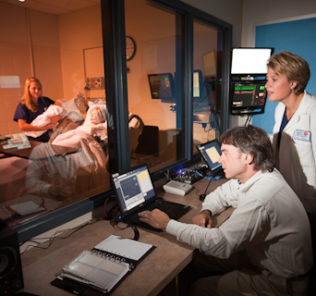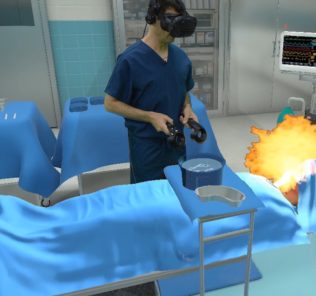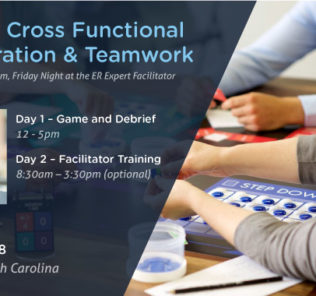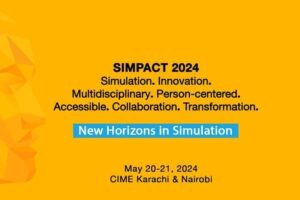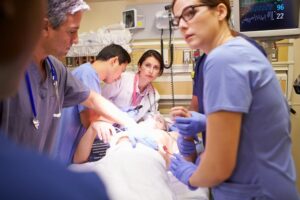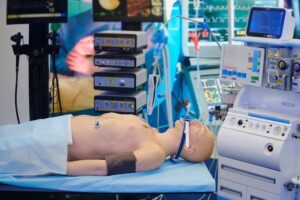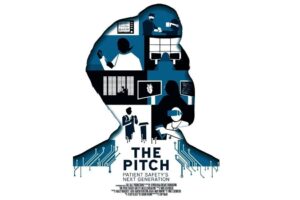The Evolution of Observation in Theater: What It Means for Healthcare Simulation Observers
Observation in theater is a core component of the art form, as the actor portrays a character for the benefit of the audience at hand. Whereas digital mediums provide for observation at the whim of the viewer who can pause, rewind, and watch again, theater requires constant attention from the audience where almost no interruption can be allowed for. In healthcare simulation, we have the ability to record with specialized audiovisual systems for playback, but not all institutions have such technological capabilities. Today, Robert Morris University Simulation Educator Molly Schleicher MSN, RN, CHSE and Educational Specialist Oxford Medical Simulation, takes a deeper look at observation in healthcare simulation, which is likewise a core component in providing effective debriefing.
As much as clinical simulation is about the participants involved, the actions they take, and the thought process behind those actions, it is also about observing all of that brilliance from the perspective of the educator. If a tree falls in a forest and no one is around to hear it, does it make a sound? If something happens in the hospital and no one documents it, did it really happen? Observation is a key element of a productive simulated experience; however, it can also be the most trivial.
Medical Simulation observers may include the facilitator, the educator, the lead faculty, the students, or many others. The ability to effectively observe has evolved much as theater and film. Because what more is simulation than a show we rehearse, hoping to be ready for opening night? This show of course being providing safe and effective patient care with real live patients where much improv is involved.
Sponsored Content:
Greek theater began as a bunch of people standing in a circle in an open, outdoor arena where the actors read the lines they practiced. By the 1600s, the presentations evolved to include more elaborate dress and makeup to enhance the performance and believability on the stage, much like we do today with moulage! Not long after this, technical enhancements developed so that the audience was no longer in a huddle around the performers, but rather in actual seats, separated by space, lights, and curtains. As technological advancements continued, the performances could then be recorded and watched later on a betamax, then a VHS, then a DVD, now a Blu Ray and Netflix. The audience has moved from seats in the theater to seats at home. Depending on the show and the audience, the way in which theater is observed remains in one of these three arenas: in person, in seats, or at home. To make things even more immersive, theater in seats (for example at the movies) can be in 2D, 3D, even 4D. Now, audiences can watch 3D movies at home and fully immerse themselves into entertainment through virtual reality (VR).
To maintain the engagement of the audience and make the experience as meaningful as possible, great efforts are made to make the observing of theater as immersive as possible. Cue the connection to nursing simulation observation. It began as students and educators standing in the same room, over the same mannequin, with the “voice of the manikin” and the “response of the body” coming from people standing right there. The participants struggled to suspend disbelief and the educators failed to see how the students would respond in a real live clinical setting. As technology and funds allowed, the educator then moved “behind a curtain” allowing the students to immerse themselves more into the scene without their superior peering over their shoulder. Eventually that glass put the educator in a separate room all together where the students could truly spread their wings being guided only by the response of the patient or the help of the educator or peers when asking for it.
This level of observation from the facilitator/educator/faculty position seems to be the most prevalent today. Although it has its perks, there are also pitfalls to the one-way mirror separating Oz from the munchkins. The evolution of observing as the educator is much like the director of the theater.
The student perspective of simulation has evolved much like the audience of theater. It began at the bedside next to their peers (the actors). At times, they remain there as this is a great way to practice interprofessional collaboration, teamwork, or put students into the family member position to get that perspective. More often now, students observe on a television screen in another room where group debriefing can occur after. The ability to live-feed a simulation to a TV in another room is probably as astonishing as we initially felt about recording live TV to watch again later. As many simulation centers also have this ability, the students could observe a simulation that has already occurred. This form of observation allows them to gather the data from the scenario but at times is limited by the quality of the picture, sound, or the interruption of the actors (students) moving out of frame. Enter 3D and VR observation.
Sponsored Content:
Although from the educator perspective, students should be learning as much through observing as they do by participating and generally this was on a TV screen. Through experience, we have found that the engagement in observing this way falters with the students attention span in the room and the quality of the recording. Through products like Syminar, a VR platform for observing simulations and classrooms, students can fully immerse in the scene as if they are one of the actors in the show. Being in the VR goggles eliminates the outside stimuli that could distract the observers. It also fully immerses them into the room, allowing them to look around and see anything they want, as if they were the participants caring for the patient. Like someone viewing the Grand Canyon on Google Earth in Oculus Rift, allowing students to observe through fully immerse platforms in VR, even those who could not participate could feel as if they truly experienced it and through that, learn even more. As these VR observation experiences are recorded, it can also be used by the educator to get the perspective of the student or the patient in the room, supporting their ability to enhance the theatrical set-up for future shows.
Like theater, simulation in healthcare observation continues to evolve and the need for many opportunities or options to view remain. At times, it is appropriate to be standing together as a team at the bedside. Other times, magical one-way mirror glass is essential to allow students to fly out of the nest away from the educator. Engagement is the driving force that tell students and educators how simulation needs to be observed. As shortages and budgets prevent students from being able to perform in live simulations, enhancing the way students observe will be key in maintaining the relevance and effectiveness of simulation-based learning. This evolution will also support the distance learners who otherwise could not participate in simulations on campus. As much as the directors are concerned with the realism of the actors involved in the show, they must also be aware of the perception of audience. Unlike having multiple takes to cut through with a producer and editor, simulation is more like stage-based entertainment, where the goal is to let the audience be a part of the show.
Additional Reading: “Observer roles that optimise learning in healthcare simulation education: a systematic review” Stephanie O’ReganEmail author, Elizabeth Molloy, Leonie Watterson and Debra Nestel Advances in Simulation20161:4 – https://doi.org/10.1186/s41077-015-0004-8.
Simulation is widely used in health professional education. The convention that learners are actively involved may limit access to this educational method. The aim of this paper is to review the evidence for learning methods that employ directed observation as an alternative to hands-on participation in scenario-based simulation training. We sought studies that included either direct comparison of the learning outcomes of observers with those of active participants or identified factors important for the engagement of observers in simulation. We systematically searched health and education databases and reviewed journals and bibliographies for studies investigating or referring to observer roles in simulation using mannequins, simulated patients or role play simulations. A quality framework was used to rate the studies. Learning outcomes and role satisfaction for observers is improved through learner engagement and the use of observer tools. The value that students attach to observer roles appear contingent on role clarity, use of observer tools, and inclusion of observers’ perspectives in the debrief.
Subscribe for More Great Healthcare Simulation Content Today!
Today’s article was guest authored by Molly Schleicher MSN, RN, CHSE, Educational Specialist, Simulation Educator at Robert Morris University.
Have a story to share with the global healthcare simulation community? Submit your simulation news and resources here!
Sponsored Content:




